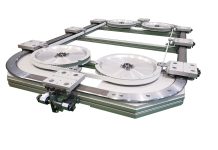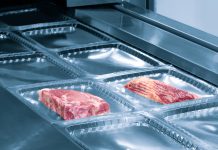
An increasing number of companies, particularly in the beverage sector, currently make use of laser technology. The reasons for this choice are mostly economic and performance such as high-speed production lines, process accuracy and repeatability and total absence of environmental contamination (the latter usually caused by vapors and residues of solvent and ink). Without adding any external element to the substrate to be encoded, laser technology eliminates every problem of adhesion and sealing as soon as it arises, guaranteeing absolute security. It is particularly appreciated in food-frozen, fresh and snacks first of all, and beverage, where production speeds seem to have no limits; laser tagging is winning where the storage of products in a controlled environment (low temperatures and/or excessive moisture) put to the test the seals of the markings made with thermal transfer technologies and ink jet. This is even more appreciated when the estimates of the technologic investment returns draw attention to operating guarantees (laser longevity) up to over 100,000 hours of work with minimal technical assistance costs and lack of consumables.
Against counterfeiting
Laser marking helps against food counterfeiting and safeguards the consumer, the product and its logo. A real help for companies on a market where businesses must often deal with unscrupulous organizations ready to alter the product’s expiration date, or to import products on parallel markets and, last but not least, to enter products that aren’t original. All these situations make the businesses lose turnover and credibility. The hardest-hit markets today include the food area, in addition to clothing, watch making, chemical- pharmaceutical and cosmetic industry. In order to ensure and demonstrate the truthfulness of their products they need indelible and anti-counterfeiting markings/encodings. The latest solutions on the market of laser encoding and marking avoid the typical problems of the various anti-counterfeiting systems that range from excessive costs for single product, the difficulty or impossibility of application within the production process, lack of surpluses management, to little security for consumer and producer.

What’s new
The major laser manufacturers, following the requests coming from the market, have developed increasingly selective marking technologies that are specific for each individual need. Some companies offer laser markers for packaging where tagging can be static or dynamic with high-speed CO2 technology or with fiber optics for a more indelible marking. CO2 technology is characterized by zero maintenance and consumables and allows printing at high speed with high quality. Through a radio frequency signal, the electronic stimulation of carbon dioxide (CO2) contained in the laser tube generates a laser beam. When it is focused on appropriate material, the laser beam is absorbed and develops heat. Through a series of mechanisms heat is converted into a mark on the product: discoloration caused by a chemical reaction, surface etching, for example: PET corrosion caused by burns, ablation or removal of the surface coating. New technology avoids the problem of substrate drilling. Another step forward came along with the introduction of laser technology in packaging by using optical fiber resonators. These lasers normally used for metals’ marking, today guarantee excellent results even in the encoding of flexible packaging and polylaminate (or multilayer) materials. Especially the latter, exploiting the features of many synthetic substrates that let them be crossed by light radiations, are well suited to fiber film technology. The message is so impressed “under the skin” while the outer protective coating is unchanged. Vector lasers are now replacing matrix printers on the market. Some characters or graphics are produced through the controlled activation and deactivation of the laser beam as it passes through the print area. As for matrix printing the number of printable characters and their readability is limited by the matrix resolution, with vector printing the range of available characters is considerably broader. Vector lasers are low cost marking systems that allow high-speed printing, very small marking, high reliability even in difficult industrial environments, compatibility with a wide range of materials. With modern industrial encoding systems, codes can be printed in high quality: whether alphanumeric, logos and graphs or barcodes on any substrate and at any speed, corner or place on a product packaging, making it accessible to a wide range of application solutions.

Many advantages
Today laser marking offers high flexibility for numerous industrial applications. Modern laser marking systems assure reliability and high quality, indelible markings, with a great ratio cost/performance. They allow marking almost every material, making it accessible to a wide range of application solutions. The advantages of laser marking systems are high speed, constant and uniform print quality, the ability to print on small or large size areas and compatibility with almost all environments. In addition, a high reliability in the production line (99.9%) guarantees no line stop for routine or extra maintenance, breakdowns, replacement of consumables or simple calibration of the system. All this turns into production increase, reducing production costs and increasing profits, with the possibility to recover the investment in the first year of production. Laser marking systems are very different from all the other traditional methods such as inkjets, printing and label applying or heat transfer, they don’t need fluids or film to create messages or images. Lasers keep the metal surface smooth, clear and well-defined, they are resistant to extreme weather conditions and chemical agents, they don’t touch the material during processing and allow marking even irregular surfaces.
by Stefania Milanello



